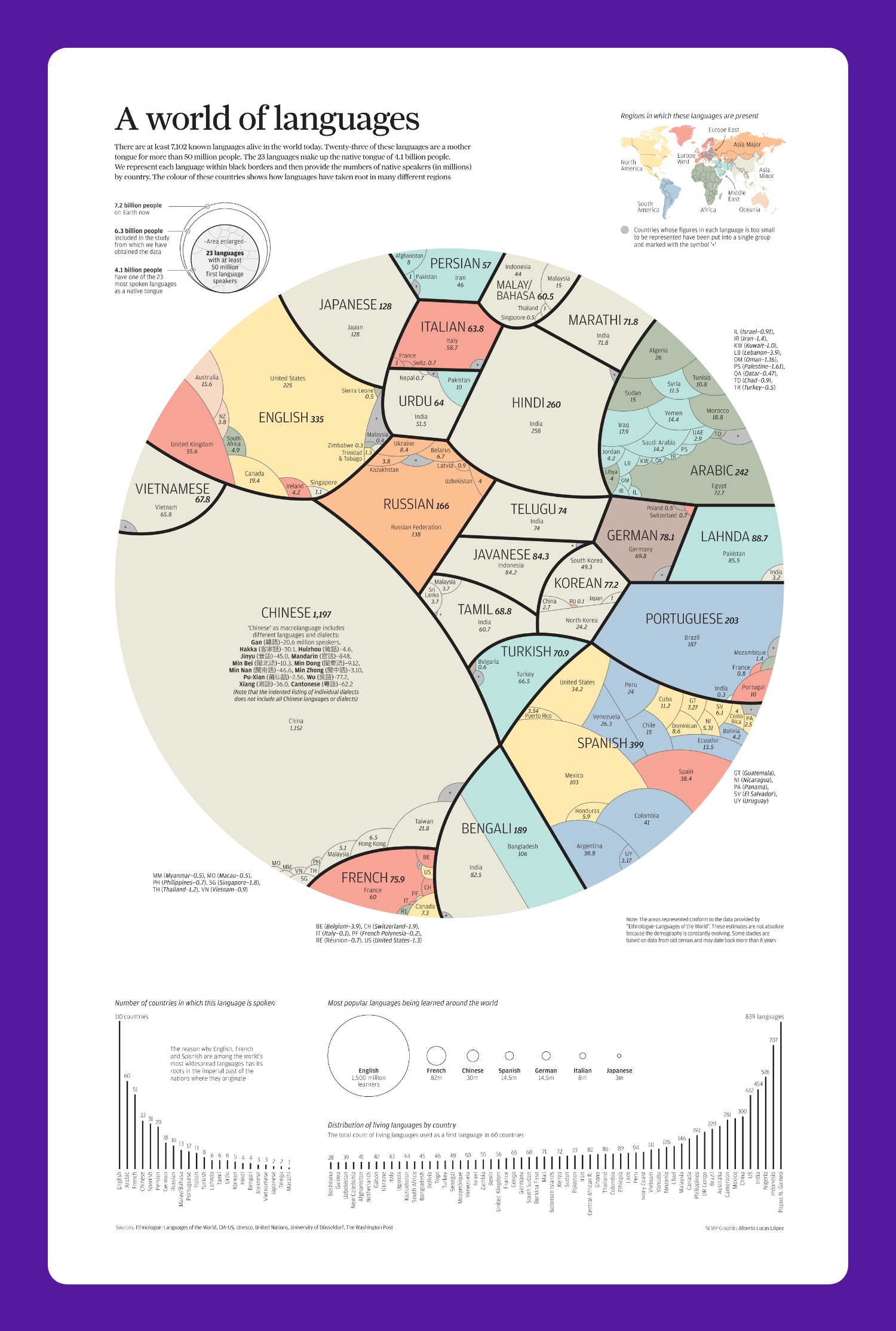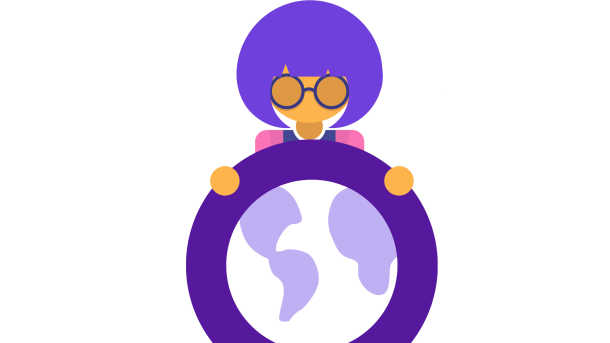There are over 7,100 languages in the world. It’s a staggering number that drives home how multicultural and diverse our society is. Even so, only a handful of those — 23 languages — are spoken by 50 million people or more as a native language.
What’s most striking is that over 4 billion people speak one of those 23 languages as a native language. That means that businesses that localize into these languages have an opportunity to reach roughly half the world.
The World’s Top Languages
This neat infographic by Alberto Lucas López, first published by South China Morning Post in 2015, shows those 23 languages and where the native speakers of those languages live. The infographic is a few years old now, but it’s no less impressive or relevant.
Chinese takes the top spot, with over a billion native speakers. Spanish followed by English round out the top three, with 339 million and 335 native speakers, respectively. The fourth- and fifth-most spoken native languages are Hindi and Arabic.
The other 18 languages are:
| Portuguese | Javanese | Turkish |
| Italian | Bengali | Korean |
| Lahnda | French | Russian |
| Telugu | Tamil | Persian |
| Japanese | Vietnamese | Urdu |
| Malay/Bahasa | Marathi | German |
 Source: South China Morning Post
Source: South China Morning Post
The Fine Print: Dialects
It’s worth highlighting that many of the languages listed above are macrolanguages — that is, under the umbrella of these languages exist several dialects. For instance, all native English speakers are grouped together, whether their native dialect is British English, U.S. English, Australian English, and so on.
At first glance, it’s easy to think these differences don’t matter. It’s the same language, after all… right?
Not so fast.
While these dialects may be similar or share commonalities, they can evolve to be incredibly different from each other.
Take Spanish as an example. There isn’t one single Spanish. Instead, there are many different kinds of Spanish spoken all over the world: Chilean Spanish, for instance, is different from Mexican Spanish. And both of those dialects are different from the Spanish spoken in Spain.
Sometimes those differences are significant. For example, in Spain, they use vosotros (the second person plural: “you” or “you all”) to address a group of people informally. And verbs are conjugated accordingly. But in virtually all Latin American countries, vosotros is not used.
Other times, the differences are subtler and more rooted in slang or colloquial expressions but are still significant. Take, for example, the common expression “cool.” Spanish speakers from Spain might say “guay” or “genial,” while Mexican Spanish speakers might say “padre.” And you’ll likely hear “bacán” in Chile.
Again, Spanish is only one example. As the infographic shows, many other languages have different flavors (or dialects) within the umbrella of the macrolanguage.
What This Means for Businesses: Localization
To properly set your company up for success when launching in new markets, you need to communicate with customers in their native language. But more than that, you must look beyond the umbrella language (the macrolanguage) and ensure you are tailoring their content to a specific locale.
The potential is enormous. We’ve seen that:
- 65% of consumers prefer content in their native language.
- 73% of consumers want product reviews in their native language.
- 40% of consumers will not buy a product if the content is written in another language.
Think about your own life and how you make decisions about the products and services you buy. Are you more likely to engage with a brand whose website and checkout page is displayed in your native language or one written in a foreign language (even if you partially understand that language)?
More importantly, which brands are you more likely to keep engaging with over time: The ones that translate a small portion of their content into your language? Or the ones that not only translate but also tailor their content to your locale?
Going global essentially requires companies to do the opposite to succeed: they must localize the user experience. Customers respond well to companies that truly understand them — which requires more than a word-for-word translation of your website.
When Thinking of Going Global: Localization Best Practices
The decision to localize your content is ultimately an investment in your business — a rather significant one at that. Mistakes can be costly: localization flubs can cause you to lose out on business opportunities, stall your expansion plans, and may even damage your reputation. To maximize your ROI, there are a few best practices to follow:
- Make localization a central focus of your market research. Before you decide to expand into new markets, consider which languages (and, more specifically, which dialects) your customers speak. Learn about your audience: What do they value? What are their pain points? How should you position yourself so that they understand your value proposition? And finally, what kind of investment do you need to make to do that?
- Incorporate localization as part of your overall content strategy. Rather than simply mapping over what you do in one market and translating that for a new audience, consider what will and will not work for your new audience: perhaps that means designing brand-new marketing campaigns or engaging via different channels.
- But don’t assume you have to start entirely from scratch. As important as creating native brand experiences is, there’s no need to reinvent your business. The idea is to be strategic about how to blend translation with unique content.
- Partner with a language services provider — and do so early. Localization is often unfamiliar territory for businesses. A language services provider (LSP) can walk you through the process and help you focus your attention where it’s most needed. Doing so early on helps ensure that you’ll receive high-quality translations and be able to deliver a fully localized experience on time and within budget.
Smartling Can Help Engage Your Customers With Localization
Smartling’s technology can help ensure consistency across all different content types and provide an opportunity for in-context translation. In addition, our expert project managers guide businesses through the process and facilitate streamlined communication with the translation team. Are you ready to take your localization efforts to the next level? Let's Get Started.






